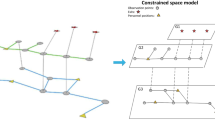Abstract
When a disaster accident occurs, choosing an escape route quickly and reasonably can not only reduce unnecessary economic losses as much as possible, but also effectively protect the lives of the people. The choice of escape route belongs to the optimal route choice problem in the route planning problem. In recent years, its importance has become more prominent, and it is regarded as a hot spot in many fields for key research. In the field of mine safety, the correct choice of the optimal path can enable underground workers to escape to a safe area in the fastest time when a disaster occurs. The purpose of this paper is to study the algorithm of mine escape route planning based on simulation model technology. After analyzing the related algorithms of path planning, the comparison and selection of algorithms, the Dijkstra algorithm is improved, and various improvement strategies are proposed for various problems existing in the mine. Finally, the improved Dijkstra algorithm is applied to the mine underground point network model during the catastrophe period for simulation experiments. The experimental results show that the improved algorithm can indeed find the optimal escape exit through a single calculation, which basically achieves the purpose of the design.
Access this chapter
Tax calculation will be finalised at checkout
Purchases are for personal use only
Similar content being viewed by others
References
Uchino G, Yoshida H, Sakoda N et al (2017) Outlet strut fracture and leaflet escape of Bjork-Shiley convexo–concave valve. Gen Thorac Cardiovasc Surg 65(6):358–360
Kaffa NS, Sukojo BM, Handayani HH (2021) Tiga Dihaji Dam access route plan alternative using geographic information system (cost distance method). IOP Conf Ser Earth Environ Sci 731(1):012007 (11pp)
Naus K (2019) Drafting route plan templates for ships on the basis of AIS historical data. J Navig 73(3):1–20
Dib O, Moalic L, Manier MA et al (2017) An advanced GA-VNS combination for multicriteria route planning in public transit networks. Exp Syst Appl 72:67–82
Pham QD, Le KT, Nguyen HT et al (2017) A constraint-based local search for offline and online general vehicle routing. Int J Artif Intell Tools 26(02):1750004
Hwang HG, Kim BS et al (2017). An evaluation of effectiveness for providing safety navigation supporting service: focused on route plan sharing service. J Korea Inst Inf Commun Eng 21(3):620–628
Conesa-Munoz J, Pajares G, Ribeiro A (2016) Mix-opt: a new route operator for optimal coverage path planning for a fleet in an agricultural environment. Exp Syst Appl 54:364–378
Yang MS (2018) Application of triangular fuzzy numbers for route selection of Shanghai-Nanjing intercity railway. J Railw Eng Soc 35(6):7–10
Zhang JD, Feng YJ, Shi FF et al (2016) Vehicle routing in urban areas based on the oil consumption weight-Dijkstra algorithm. IET Intell Transp Syst 10(7):495–502
Lu L, Gao J (2021) Research on aircraft taxiing path optimization based on digraph model and Dijkstra algorithm. IOP Conf Ser Mater Sci Eng 1043(4):042045
Yipeng LU, Xian XU, Luo Y (2019) Path planning for rolling locomotion of polyhedral tensegrity robots based on Dijkstra algorithm. J Int Assoc Shell Spat Struct 60(4):273–286
Mena FM, Ucan RH, Cetina VU et al (2016) Web service composition using the bidirectional Dijkstra algorithm. IEEE Lat Am Trans 14(5):2522–2528
Acknowledgements
Fund project: Science and Technology Research Fund for Young People—Study on grey optimization method of coalbed methane area guided by multi-attribute subjective and objective factors, Item no. 201901D211452.
Author information
Authors and Affiliations
Corresponding author
Editor information
Editors and Affiliations
Rights and permissions
Copyright information
© 2022 The Author(s), under exclusive license to Springer Nature Singapore Pte Ltd.
About this paper
Cite this paper
Lu, G., Zhao, G., Yu, L. (2022). Mine Escape Path Planning Algorithm Based on Simulation Model Technology. In: Atiquzzaman, M., Yen, N., Xu, Z. (eds) 2021 International Conference on Big Data Analytics for Cyber-Physical System in Smart City. Lecture Notes on Data Engineering and Communications Technologies, vol 103. Springer, Singapore. https://doi.org/10.1007/978-981-16-7469-3_16
Download citation
DOI: https://doi.org/10.1007/978-981-16-7469-3_16
Published:
Publisher Name: Springer, Singapore
Print ISBN: 978-981-16-7468-6
Online ISBN: 978-981-16-7469-3
eBook Packages: Intelligent Technologies and RoboticsIntelligent Technologies and Robotics (R0)




